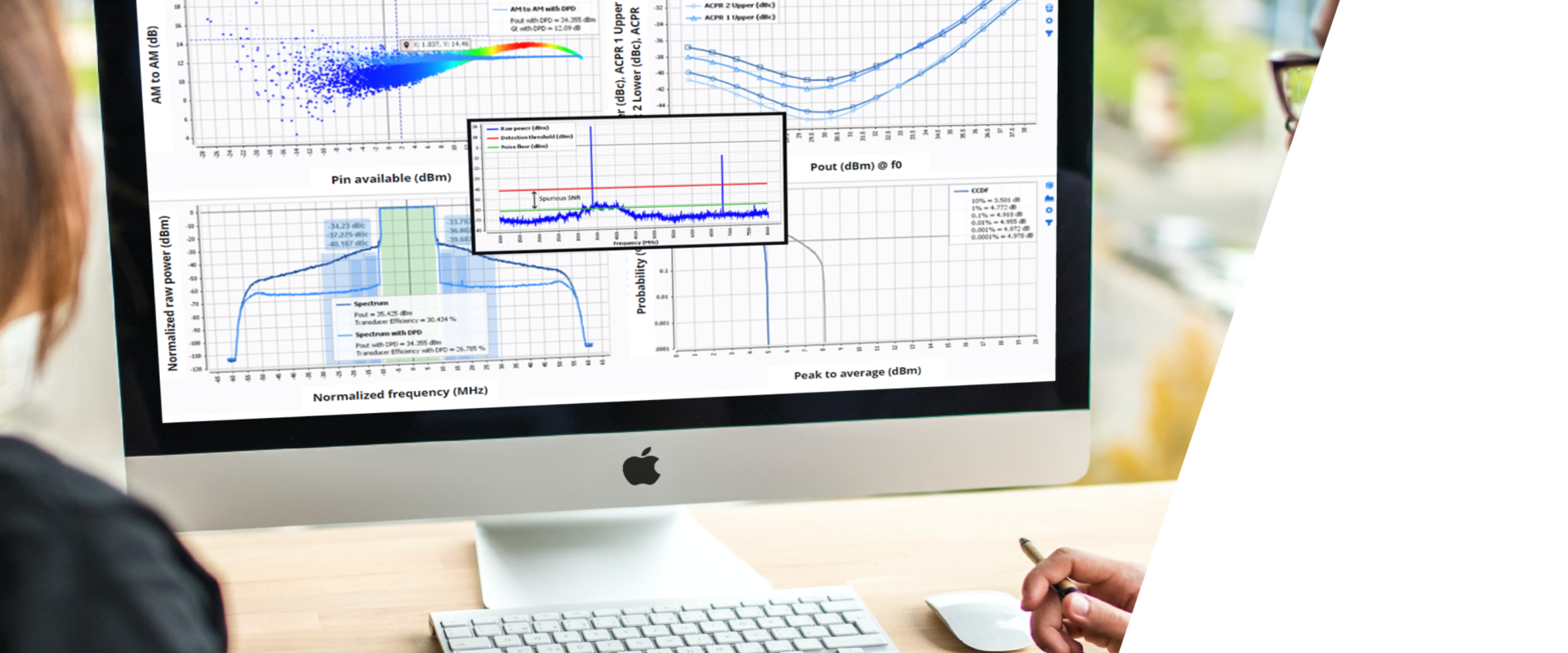AMCAD Engineering announce the release of IQSTAR 1.4, the most advanced RF Circuit Characterization Software.
This major release includes new modules and features to address the industry’s additional applications and measurement requirements. It also showcases enhancements of the capabilities of the existing modules to increase user experience satisfaction.
IQSTAR 1.4 New Modules
From its inception, IQSTAR was addressed to amplifier characterization with a coaxial connection type, limiting the operating frequencies of the setups to 67GHz, depending on the instruments. With the continuous rise in the operating frequency for different applications, the need for a waveguide-type setup becomes increasingly urgent. The AMCAD development team developed the following new modules to address this market segment.
- New measurement module IQS200B: Waveguide Power Amplifier Setup
- Module IQS200B-10: Waveguide Scalar Bench Control, 1-Tone Measurement
- Module IQS200B-20: IMD Control, 2-Tones Measurements for Waveguide setup
- Module IQS200B-25: FAST Spurious Detection for Waveguide setup
- Module IQS200B-30: Modulated Signal Control and Measurements for waveguide setup
With these modules, a complete characterization of a power amplifier using waveguide connection and instruments can be standardized and automatized.
- IQS-UNPLG: Unplugged mode allows running IQSTAR in virtual to develop script Off-line
With this module, the development team can support their test engineers in automating measurements without depriving them of a license that can be used on a bench.
Regarding standardizing and automating measurements, IQSTAR 1.4 embeds a new module allowing us to run the software in a virtual mode to enable our customers to develop measurements script offline.
This new module uses all the functionalities of the software to create setups, configurations, templates and sweep plans without the need to monopolize measurement instruments for this activity; this way, the test instruments can be kept available for measurement activities. This module is meant for development teams that need a license of IQSTAR to build specific test sequences and debug such sweep plans in virtual mode before deploying them on the test benches.
New Waveguide Scalar Bench Control, 1-Tone Measurement Module IQS200B-10
IQS200B-10 enables a waveguide scalar characterization of the DUT using a signal generator, power meters, frequency up and down converters and waveguide step attenuators.
Different frequency conversion setups are available, allowing end-user to control of up & down converter. Up & Down converters can be configured in Mixer mode or Multiplier/Divider mode, offering large flexibility regarding LO source configuration.
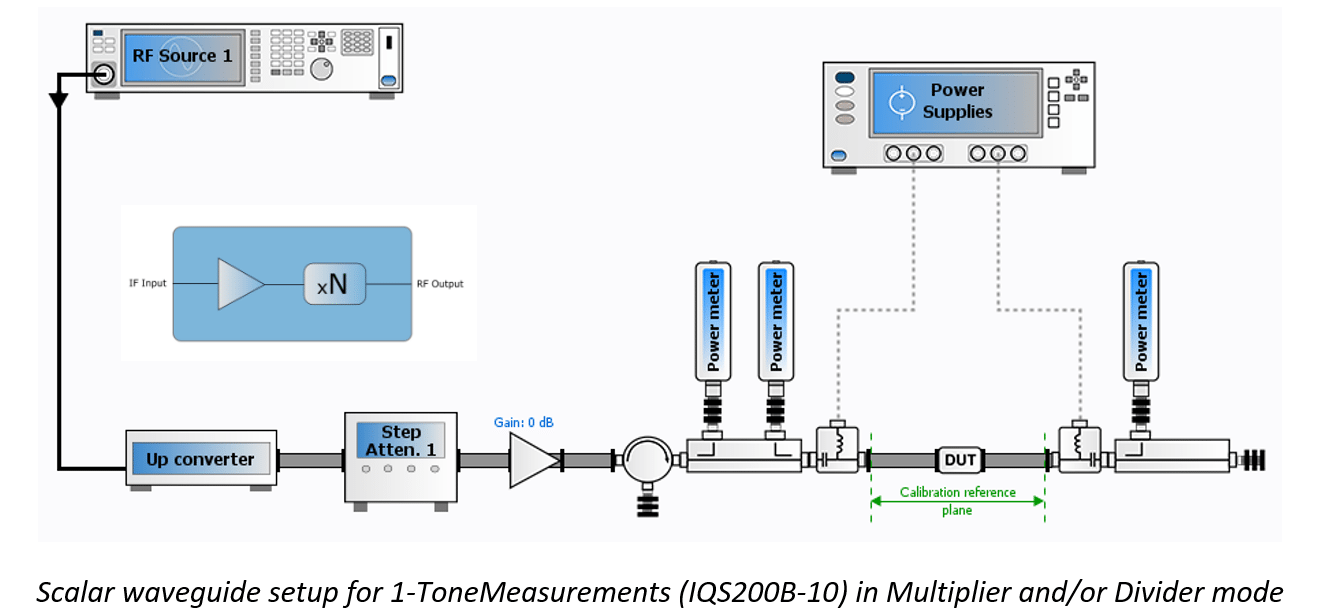
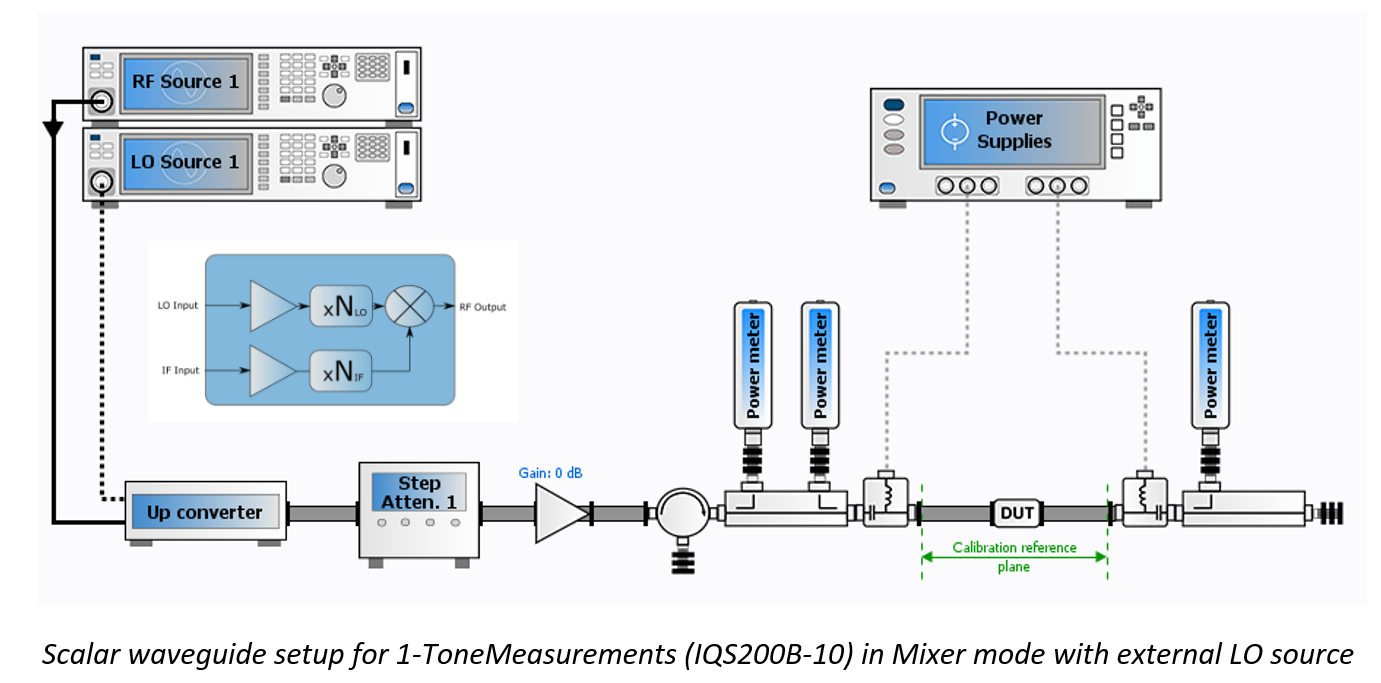
In a waveguide setup, the power level is controlled by an external waveguide step attenuator to avoid nonlinearities provided by the upconverter. As done in IQS100B-10, it’s also possible to use two or three power sensors to measure Pin, Pout and Prefl and extract additional parameters such as IRL, Pin delivered, Gp …
New IMD Control, 2-Tones Measurements for Waveguide setup Module IQS200B-20
This module uses two analog RF sources combined after an upconverter through waveguide “magic tee” and a downconverter to analyze IMD with a Spectrum Analyzer. In this case, two upconverters and two step-attenuators are used to control f1 and f2 independently.
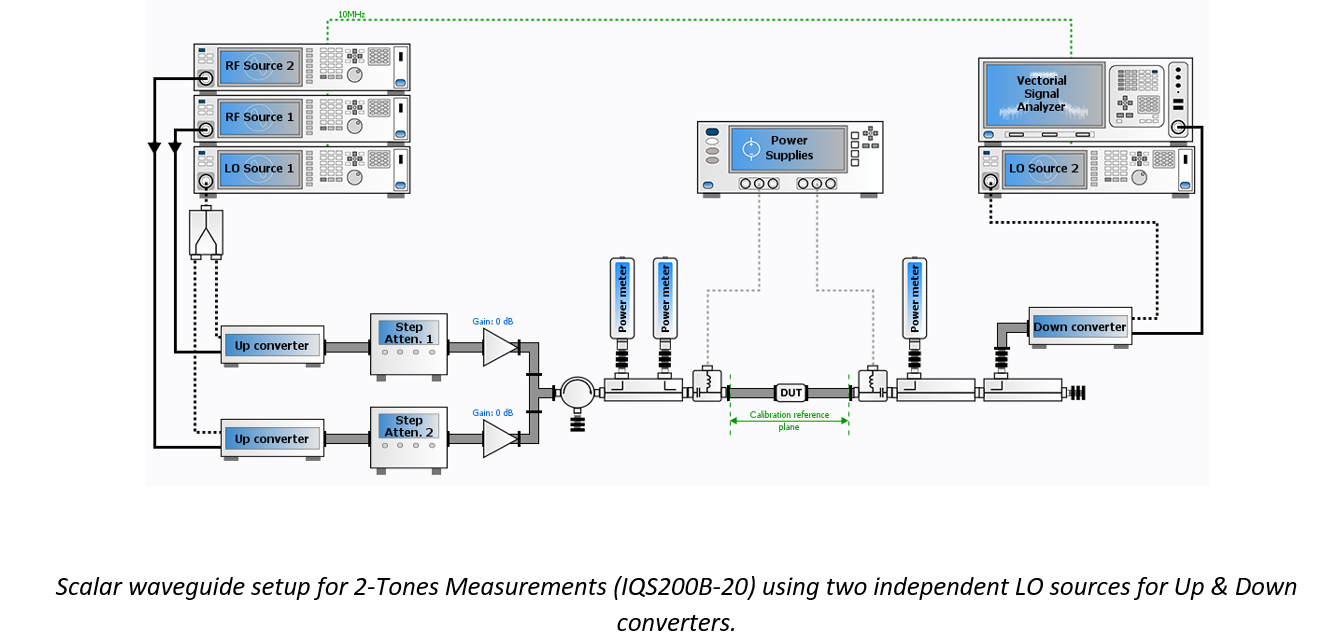
New FAST Spurious Detection for Waveguide setup Module IQS200B-25
Starting with IQSTAR 1.3 release, Fast Spurious detection is available. This module allows a fast search and analysis of spurious signals, using the spectrum analyzer to recover the trace for each swept parameter. A processing algorithm is then employed to dissociate spurious frequencies from signal frequencies. Detection-per-frequency segment is possible when different criteria based are needed for each band.
Spurious detection is an important step in the Design Validation Testing (DVT) and the Production validation testing (PVT) of RF and Microwave power amplifiers. Spurious emissions decrease the system performance and cause interference in adjacent frequency bands. Some industries like aerospace and defense must detect very low-level spurs.
A classical technique consists of reducing the resolution bandwidth to the narrowest to lower the noise floor of the equipment. However, the implementation simplicity of this technique comes at the cost of a very long measurement time, especially since the spurious location cannot be predicted in advance, which imposes a full scan of a large frequency bandwidth at a very low RBW level.
Even with new fast spectrum analyzers, spurious detection can take hours or even days when combined with nested loops of frequencies, biases, power levels, VSWR circles.
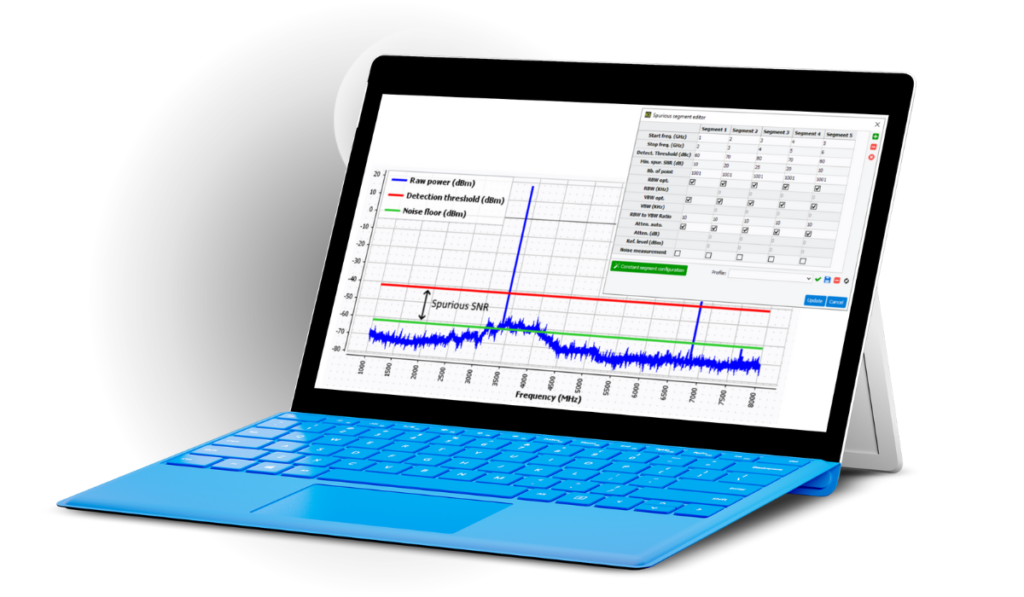
IQSTAR takes advantage of fast spectrum analyzers using FFT filters to search spurs and reduce testing time. The spurious research algorithm embedded in IQSTAR automates and speeds up the process.
A simple GUI is used to identify the frequency segments for spurious detection with different noise levels, spurious threshold levels, number of points and more settings.
The software optimizes the RBW level automatically to find the best trade-off between the detection threshold and the measurement speed.
In other words, the RBW is set to the lowest level to detect real spurs at required frequencies and higher in the ranges where no potential spurs have been detected.
Spurs generated by the analyzer itself, called residuals, are identified, and automatically removed from the result list.
New Modulated Signal Control and Measurements for waveguide setup Module IQS200B-30
The DUT can be characterized using a complex RF signal, and different figure-of-merit related to a modulated signal excitation can be extracted. As described above for the IQS100B-30 module, IQS200B-30 fetches the main Figures-of-Merit provided by Vector Signal Analyzer in a wideband signal configuration as ACPR, CCDF; PAPR … in a waveguide configuration.
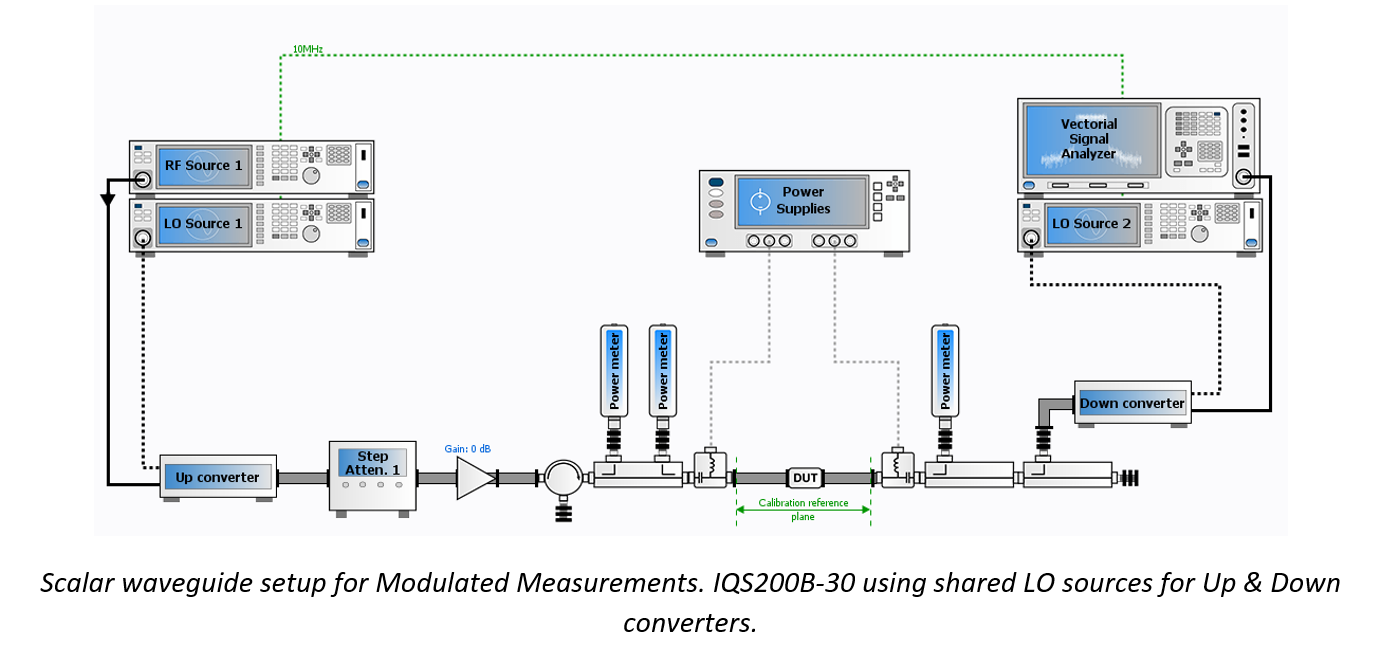
IQSTAR 1.4 Main Features
To improve the test engineer’s measurement efficiency and to provide an appropriate tool for a thorough analysis of the amplifier performances, multiple features were added to the IQSTAR modules.
- IQMASTER6400 control for close-loop DPD
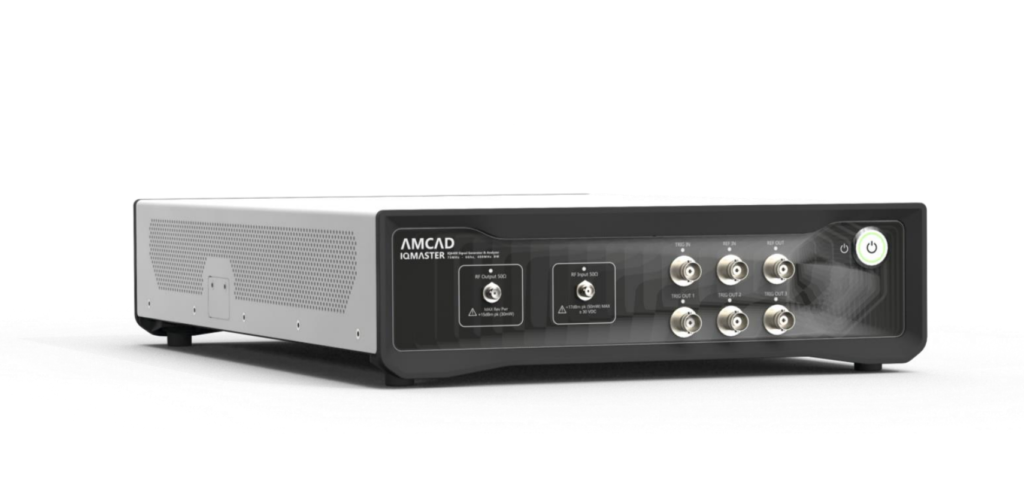
DPD algorithms have been embedded in the FPGA of our new instrument, the IQMASTER 6400 Vector Signal Transceiver, to increase the linearization evaluation speed and minimize the data transfer between the instrument and the computer resulting in a faster tuning process and higher throughput.
- IV screenshot in 1-Tone measurement
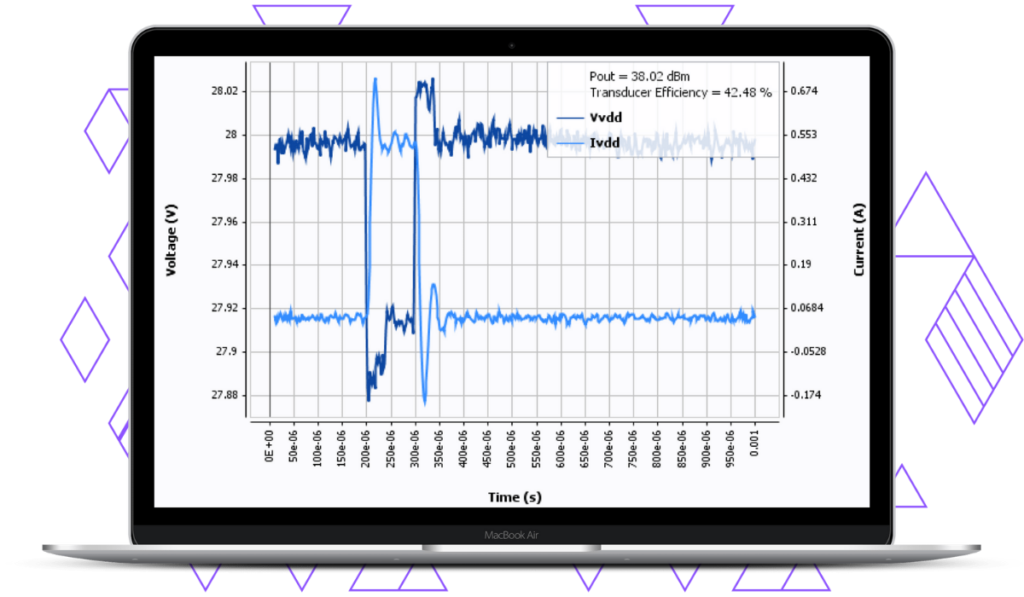
Analyzing the voltage and current pulse shape in the time domain during the power sweep provides important insight into the power amplifier’s performance.
- DUT Optimization: optimization on Pulsed values
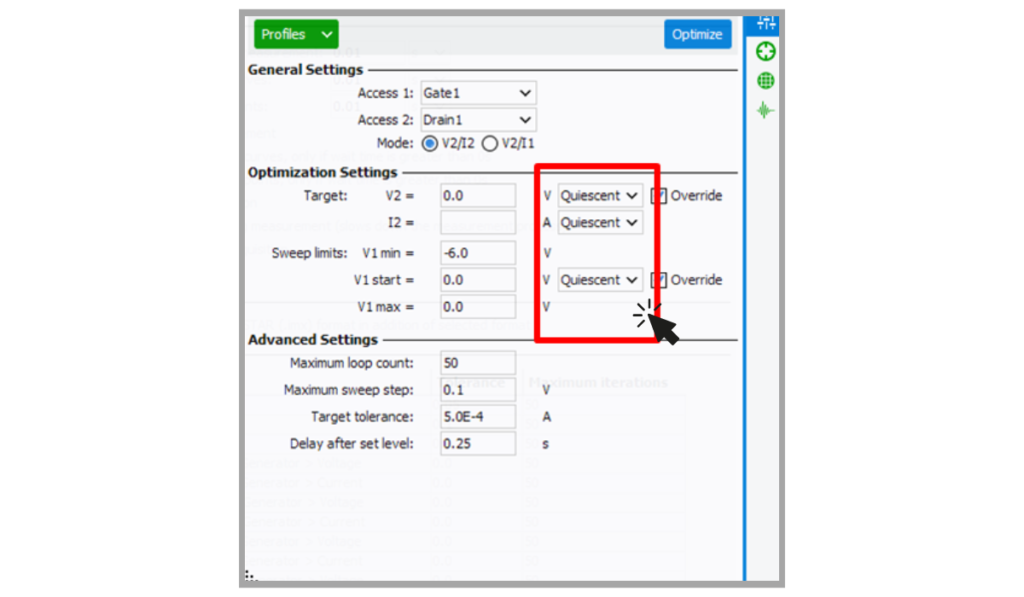
Previous versions of IQSTAR included a DUT biasing optimization routine to achieve a certain current condition by controlling a voltage. The new release adds the capability to have a different mode of biasing (DC or Pulsed) between the input and output.
- Customizable metadata
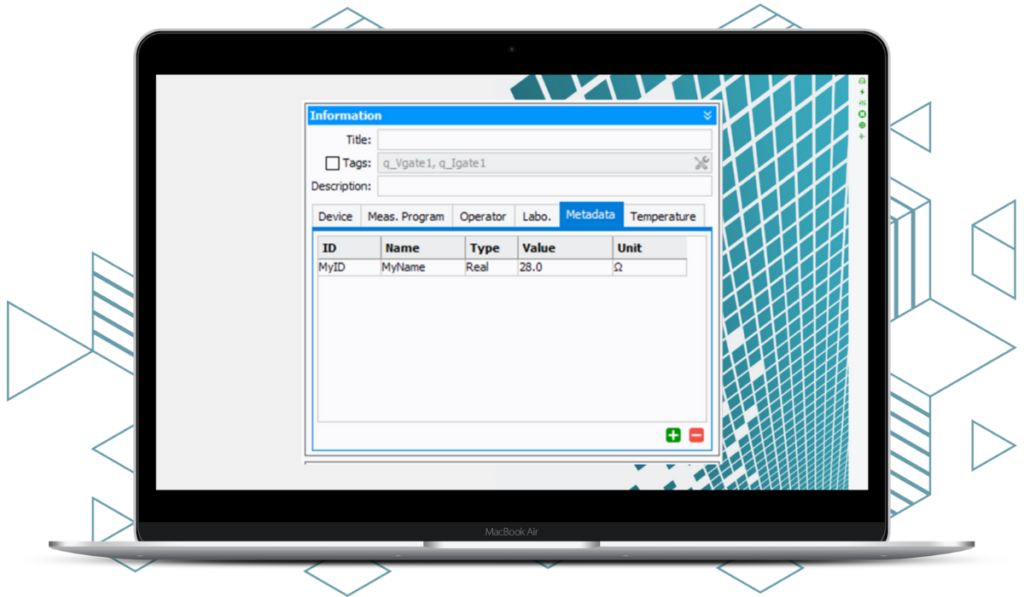
It is no secret that every test engineer likes to enter the information about the measurement campaign, device series or conditions in a personalized way. The information panel of the general configuration setting is the right place to enter all the needed metadata, and the new release augmented this section with a customizable metadata section.
- Option tooltips for drivers
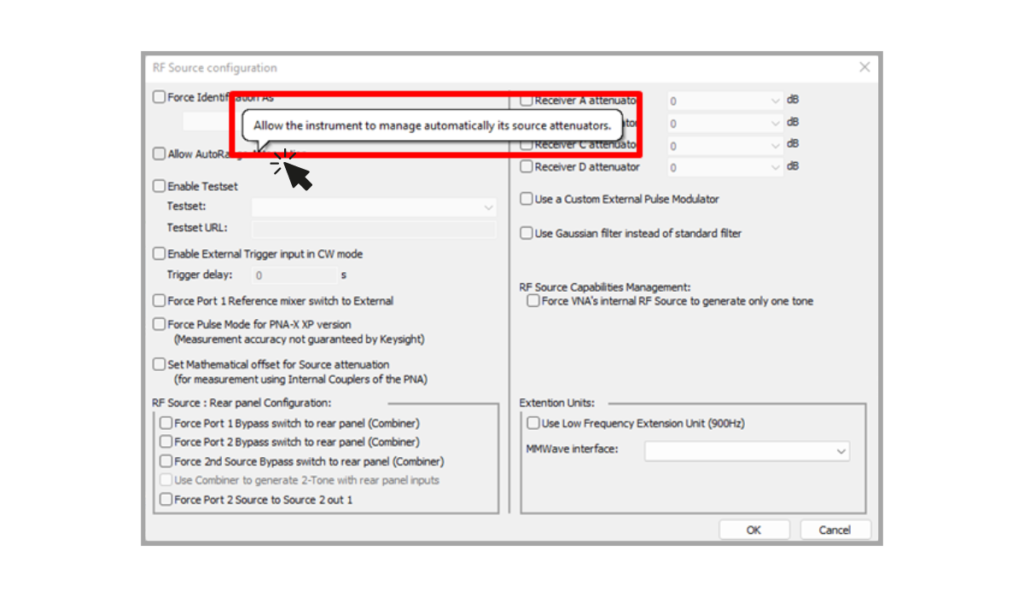
With the increasing options supported by the instrument drivers, each instrument has different controls and menus. The new release of IQSTAR embeds tooltips to explain the functionality of each option enhancing the user interface experience.
- New homepage and modern interface
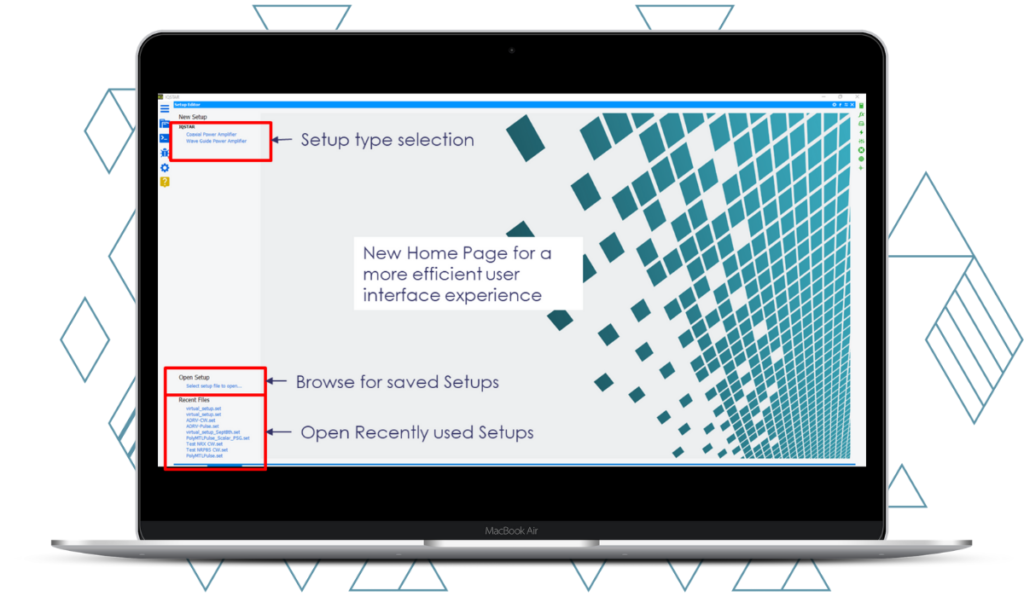
The new homepage of the software displays important information about the setup files. This feature is very useful for identifying with a single mouse click all the setup characteristics, instrument configuration, timing settings, calibration files, and dates of calibration and validation. A more up-to-date user interface is released, supporting the capabilities of current operating systems enhancing the user interface experience.
IQSTAR 1.4 Software Improvements
Multiple enhancements were added to the latest release to enhance the test engineer experience. Below is a list of improvements that were added to the IQSTAR 1.4 release.
- Up-to-date Dialog boxes system (requires Windows Vista and newer)
- Improved Data Export capabilities
- Direct export of measurement data to different file formats
- Enhanced tag capabilities of the measurement file names for automated file names.
- Quiescent Current stabilization feature with new capabilities.
- Probe station control and on-wafer measurements embed additional information about the dies and measurement conditions.
- New capabilities added to the Spurious measurement module.
- New measurement data was added to the list.
- Multiple improvements to the scripting modules help build robust automated test sequences.
We thank our increasing number of customers worldwide for their feedback allowing us to improve IQSTAR at every release. A more detailed list of all the new modules, features, enhancements, drivers, and bug fixes is available in the product manual of IQSTAR, available with the software installer

